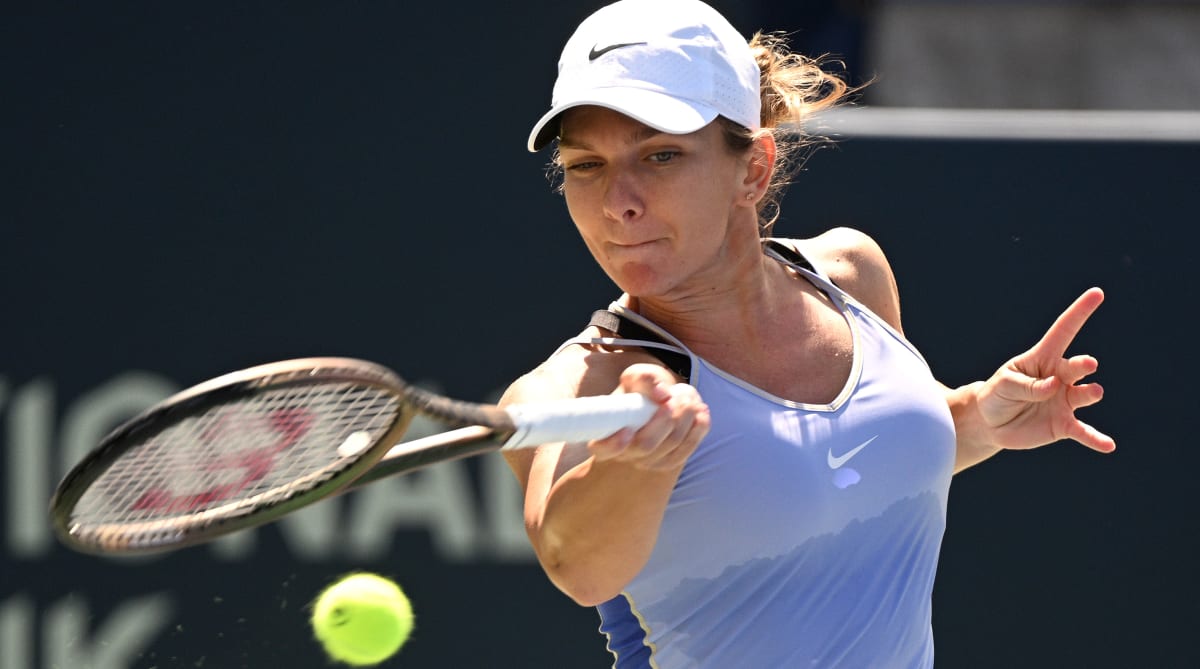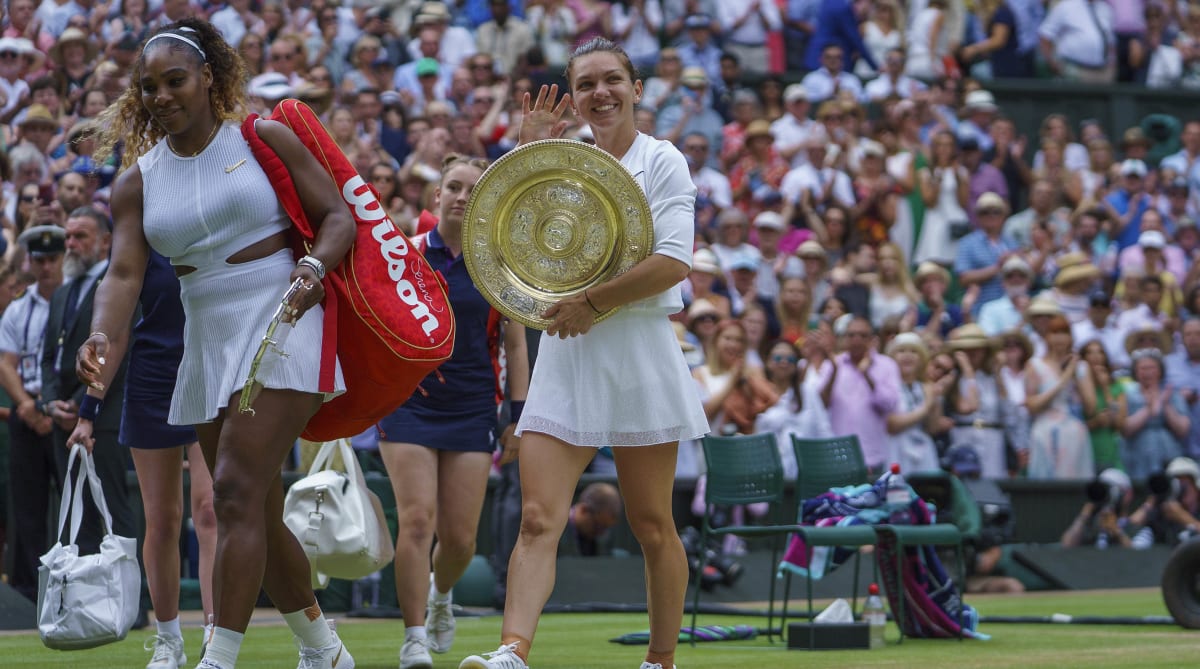Hey, everyone … let’s do a one-topic column. Next week we can get back to tennis, Laver Cup, events in Asia, Coco-Mania, best wishes for Brad Gilbert, etc.
There were a lot of questions and comments and social media about Simona Halep and last week’s bombshell decision finding “substantial evidence” of “intentional” doping violations, accompanied by a ban of four years. The decision is here. Even by legal standards, it’s a bit of a slog. And it does leave several obvious questions unanswered (or admits there is no dispositive answer). But it’s extraordinarily detailed and gives the rationale behind not only the guilty finding but also the delay. Trying to incorporate as many of your questions/comments as possible, here are some of my takeaways.
• Halep’s a cheater! No, Halep’s the victim of a witch hunt! You take a binary stand at your peril. We can all point to athletes who have had decisions reduced or vacated on appeal, or who have successfully pointed to procedural errors. We can also point to many more athletes who have protested their guilt or furnished alibis, only to admit guilt later. That said, objectively, this is a lot of forensic detail and a rough set of facts for Halep and her defense team. Her lawyer, Howard Jacobs, is tops in class. But it will be a challenge to overcome this fact pattern.
• This is not your standard doping case; roxadustat is not your standard banned substance. Greatly simplified, as I read the decision, the finding is essentially that even if Halep’s supplements were contaminated, that does not explain the volume and concentration of roxadustat the testing revealed or the irregularities with her biological passport. The tribunal found it was “not realistically possible” that the levels of roxadustat in her body could have come from a keto MCT supplement. There had to be an additional source.

Dan Hamilton/USA TODAY Sports
• On its face, this is damning. But one possible defense might go like this: Wait, you’re telling me the supplement contained roxadustat; but you’re also telling me you don’t believe that was the source of the exact same banned substance? So two different products in the same markets are both contaminated with the same prohibited drug? What are the odds of that? … And if the conjecture is that Halep intentionally doped with roxadustat and then used a roxadustat-contaminated supplement as cover, that, also, seems unlikely.
• It’s easy to shout opinions and declare unqualifiedly that either an athlete is a cheater or a victim. But harder to report these stories. As should be the case, the process is conducted behind closed doors. Panel members are seldom available to the media/public for follow-up questions and clarifications.
• Apart from levels of banned substance and the biological passport discrepancies, here’s what is deeply problematic: Halep’s failure to list the keto MCT supplement on various forms and in interviews. Per the decision: “That was distinctly careless of her, especially at the interview when the need for complete openness would have been more apparent.”
Note, this is where Maria Sharapova’s defense went off the rails as well. If meldonium were innocuously being used to address her diabetes, why withhold listing it on forms? Halep, too, omitted the banned substance from her forms. By Halep’s own admission, she was trying a new supplement. She and her team had concerns sufficiently serious that colleagues were asked to double-check and source the ingredients. The supplements were so “boutique” that they were unavailable for over-the-counter purchase, instead ordered from Canada. … And, weeks later, Halep didn’t mention this new substance on forms, or when asked, even after her positive test? Imagine: You were wrongfully accused of taking a banned substance; wouldn’t you empty the bucket offering every possible substance you ingested, hoping one might explain the mishap? Why withhold anything?
• I was in touch with a member of the Halep camp last week. As part of its defense, it will argue that two of the tribunal members were, allegedly, prepared to exonerate the athlete based on the facts and strength of the evidence. Then they discovered Halep’s identity and effectively changed their vote to guilty. If true, this is obviously deeply concerning and would represent real corruption. But this strains common sense, if not credulity. There are integrity issues here. There are liability issues here. These doctors and professors are going to risk their reputations—and that of the process—and possibly risk their medical licenses, because of a personal vendetta/agenda against … a 31-year-old Romanian tennis player, notably well-liked and controversy-free before this?
• We need to talk about Patrick. Coaches do victory laps and interviews when their players (or sometimes even not their players) succeed. Fine. But fairness demands coaches must be made to answer when players falter. Those are the rules of engagement. In 2022, Halep began working with Patrick Mouratoglou. As we wrote last summer, this caused considerable concern in some corners. Halep—hardly considered rash and impetuous—abruptly cut ties with her entire team, many members having been with her for years and thus were left feeling betrayed. For the first time in her career, she suffered an on-court panic attack at the French Open. After a successful Wimbledon and Canada tournament, she lost in the first round in New York. Then a positive doping test. And surgery. And a life change, to boot.
This doesn’t mean there is guilt nor negligence. It doesn’t mean there is doping. It doesn’t mean that correlation equals causation. But that’s a lot of churn and flux and drama for a player always known for her measured professionalism. If you cloak yourself in the spotlight when the going is good, in the inverse/adverse, there must be accountability as well. (Side note: This is yet another instance of conflicts of interest corroding tennis. When a figure central to a doping sanction/appeal shares your green room, imagine the chilling effect it has on an open and robust on-air discussion about PEDs in tennis.)

Susan Mullane/USA TODAY Sports
• Players’ reactions and opinions are all over the map here. Serena Williams—who of course lost to Halep in the Wimbledon final and was previously the player coached by Mouratoglou—made her thoughts known. I heard from multiple other players who have similar sentiments. It’s just not that players who lost to Halep now wonder whether she was dirty. Having finished in the top 10 in 2022, she earned WTA bonus money.
• Yet, other players stand in support of Halep and take anger at the system. One is Caroline Wozniacki—a contemporary of Halep’s—who is willing to go on the record. “First, I’m against all this injustice [of] delays in the case. The process must be much faster. It’s too hard emotionally for athletes to live in this uncertainty.”
About other players who have condemned Halep: “Rivals’ opinions affect the public opinion. There should be more respect, at least till the final verdict. And everybody should treat the case ‘exactly’ as the final verdict released without assumption. If it’s contamination, then it’s just a contamination, not a whole career of cheating! How can [accused athletes] return to the sport if everyone is treating them as a cheater? Destroying career and life because of a contamination!! … everyone could be in the same situation!”
She added: “’Its not fair, at all, that athletes receive all the punishment without the team. They hire staff to do the work for them; they’re not nutrition or chemical experts. The staff should receive the big part of the punishment … it’s their responsibility.”
• I got destroyed on Twitter (the platform now known as X) for making this remark, but I stand by it. Four years—never mind six—is a brutal punishment. That doesn’t make it undeserved nor unfair. But it’s harsh, a considerable chunk of an athlete’s career. (And a virtual career death sentence when you are 31.) If this were American sports—where anti-doping policy is collectively bargained between leagues and unions—Halep would not have missed a full season for a first offense. If this were the UFC (another individual sport) the punishment would likely have been six months to a year.
• As a condition for being an Olympic sport, tennis is a signatory to the WADA code and abides by its rules. I’m not sure it’s a good look for athletes to agitate for less stringent testing and lighter penalties. But note that NBA players are Olympic-eligible but are not subjected to WADA testing during the season. That is: If tennis players felt they had leverage (and could make a unified approach), they might be able to have some say over their anti-doping policy.
• Note that Halep could reduce her sentence to three years if she were to admit guilt. That seems unlikely.
• Halep has the right to appeal to CAS; and she will be exercising that right. Historically, CAS has slashed the punishments imposed on tennis players. But it has the right to increase sentences based on evidence. It will be interesting to see whether the ITIA will play hardball and reiterate its recommendation for a six-year ban. Which is to say, there are a lot more sets to play here. … Got this text from Halep the other day: “I will not back down. I’m eager to clear my name and get back on the court.”







